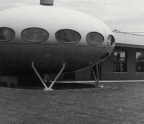

The following is an excerpt from Enslaved, Indentured, Free: Five Black Women on the Upper Mississippi, 1800–1850, released this fall by the Wisconsin Historical Society Press. This excerpt follows two women, Courtney and Rachel, as they sued for their freedom, and the freedom of their young sons, in St. Louis in the mid-1830s. Both women were born into slavery around 1812. Through no choice of their own, they were removed from the care of their mothers and families, given or sold to strangers, and transported by white enslavers into territories where slavery was illegal. In 1834, Rachel petitioned for the freedom of herself and her son, James Henry, based on their prior residency in a free territory. Almost exactly one year later, Courtney did the same.
Courtney had lived just about four months at Prairie du Chien when Alexis Bailly decided to sell her. In October 1835, Alexis took Courtney down the Mississippi River to St. Louis, where he sold her and her seven-month-old son William to Samuel S. Rayburn. Her other young son Joseph remained with the Bailly family and would remain enslaved by them until he escaped at the age of seventeen to live among the Dakota. In the control of yet another strange man, Courtney would have despaired for her future and that of William. But perhaps she, as she prepared for herself and her son to be sold by her enslaver to a plantation owner: “I had a woman’s pride, and a mother’s love for my children; and I resolved that out of the darkness of this hour a brighter dawn should rise for them. My master had power and law on his side; I had a determined will. There is might in each.” Indeed, Courtney’s future was about to be dramatically changed for the better, thanks in part to this move to St. Louis where enslaved people could petition for their freedom and thanks in part to the similar efforts of a woman she had never met: Rachel.




